by Christine Pesta
For many, money is tight these days; it may be hard for a lot of people to make ends meet. Yet most people, regardless of income, have become more health conscious.
However, for those whose finances don’t leave much room for even bare necessities, trying to pursue a healthy lifestyle may seem out of reach. Many in such a situation may feel there aren’t many healthy, affordable options when it comes to buying groceries, and have to resign themselves to whatever is cheapest rather than nutritious.
That doesn’t necessarily have to be the case. In fact, one of the healthiest dietary options – a vegan diet – can be more affordable than most people think. While many people believe that such a way of eating involves spending a ton of cash, most would be surprised at how much cheaper it can be than the average grocery bill of a meat-eating consumer.
“But what about protein?”, you may ask. This is the number one most dreaded, but always expected, question of most vegans. However, that is not to say that vegans don’t mind answering the question – but that does seem to be all that most meat-eaters ask, or use as an excuse not to become vegan.
The truth is, as most vegans will tell you, many of the largest and strongest animals on the planet eat plants exclusively. Cows, elephants, giraffes, hippos, and gorillas, for example, receive their nutrition from a plant-based diet. Humans can do the same. Many edible plants contain more protein per serving than a hamburger or steak. It then stands to reason that there is no point to consuming beef in order to obtain protein – simply eat plants as the cow does. It manages to grow big and strong just by grazing on grass, so it would make more sense to eliminate the “middle man”, as it were, and go for the plants as well.
This would also make sense from an ecological standpoint. The world is not in the greatest shape at the moment – due to humans. Climate change is being accelerated by the effects of greenhouse gases and deforestation, most of which are due to the consumer’s demand for meat products. If more people realized how much more land and water is required to produce meat than crops for consumption, becoming vegan would be a no-brainer.
Protein can be found in beans, nuts, broccoli, spinach, and other leafy greens to name a few sources. There are also many products on the market now that mimic the taste, texture, and even appearance of meat, so that it serves to make the transition to a plant-based diet that much easier.
If you went to the grocery store looking for items with which to make your meals for the week, you could find many budget-friendly items in the aisles that would include rice and pasta, beans – both dry and canned, fruits and vegetables such as apples, bananas, oranges, spinach, lettuce, cucumbers, carrots, potatoes, and non-dairy milk such as almond or soy milk. Frozen vegetables can be just as nutritious as fresh ones. They will last longer in the freezer, so will keep fresh for use without worries about waste from spoiling, should you feel you may not have time to eat the fresh ones soon enough.
So what can you make for your meals with the things you purchase? Chickpeas are a great source of protein and are very cheap to buy. They can be added to soups, salads, casseroles, or made into hummus – a great spread for sandwiches or dip for snacks with vegetables or crackers. Then there’s those old standbys like pasta and marinara, or rice and beans, which can both be very inexpensive as well as filling. A stir-fry is always a fun, fast, and easy option as well. Breakfasts do not need to include eggs and bacon to be cheap, fast, nutritious, and satisfying. Avocado toast, smoothies, a tofu scramble, oatmeal, or a bran cereal with berries and almond milk are a few possibilities. Lunches can also be convenient to make and carry to work. Salads, soups and stews, chili, casseroles, burritos, sandwich wraps, or a baked potato with fresh veggies works great when it comes to recharging in the middle of the day.
There are also many great books and videos out there to creatively help prepare meals for you and your family without having to consume such unhealthy ingredients as meat, sugar, or processed foods with high amounts of sodium and fat.
Staying on budget while adopting a healthy diet and lifestyle is something we can all do. It may require a few adjustments, a little trial and error, and in some cases a little patience, but before you know it, you will be shopping for food with confidence and the savvy of someone who has been doing it for years.










